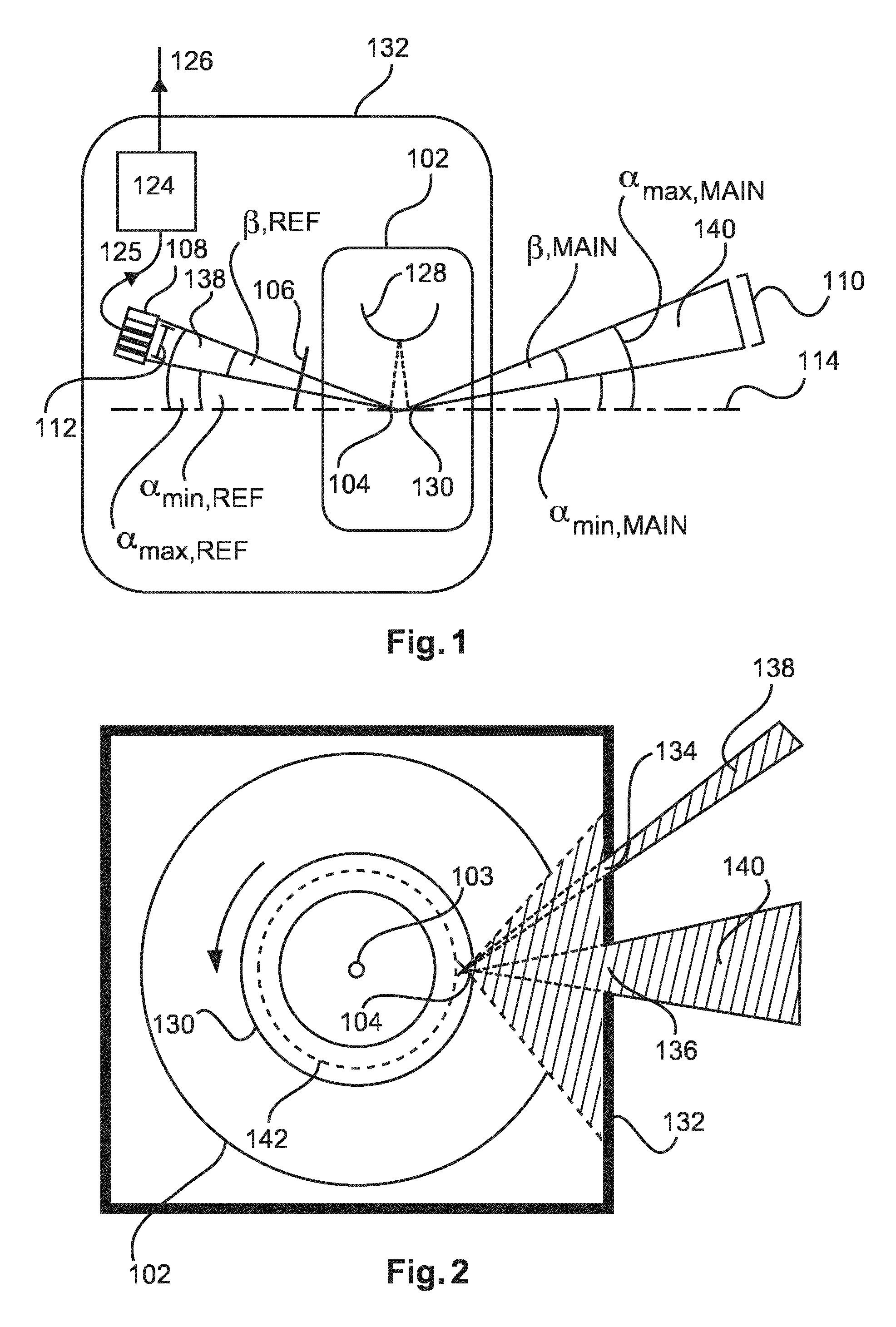X-ray detection
a technology of x-ray detection and x-ray beam, which is applied in the field of x-ray detection, can solve the problems of reducing the image quality of an imaged object, affecting the image quality of the imaged object, and the size and x-ray intensity distribution of the resulting beam may also vary in an undesired way
- Summary
- Abstract
- Description
- Claims
- Application Information
AI Technical Summary
Benefits of technology
Problems solved by technology
Method used
Image
Examples
Embodiment Construction
[0096]FIG. 1 schematically illustrates an X-ray tube housing assembly 132 according to the invention. The X-ray tube housing assembly 132 comprises an X-ray tube 102 contained inside the source. The X-ray tube has a sealed envelope maintaining a vacuum inside it. Inside the tube there is a cathode 128 arranged in proximity to a rotating anode 130.
[0097]When an appropriate voltage is applied across the cathode and rotating anode, an electron beam travels through the vacuum and impinges on the rotating anode 130. The rotating anode, as used in a CT system, has a frusto-conical (segment of a cone) form, an example of which is shown in FIG. 3c. The point at which the X-ray beam impinges on the rotating anode 130 is known as the focal spot 104. The focal spot is located on the slanted side (chamfer) of the frusto-conical form. X-rays are emitted from the focal spot as a result of the rapid deceleration and acceleration of the electrons, leading to the emission of “Bremsstrahlung” radiati...
PUM
 Login to View More
Login to View More Abstract
Description
Claims
Application Information
 Login to View More
Login to View More - R&D
- Intellectual Property
- Life Sciences
- Materials
- Tech Scout
- Unparalleled Data Quality
- Higher Quality Content
- 60% Fewer Hallucinations
Browse by: Latest US Patents, China's latest patents, Technical Efficacy Thesaurus, Application Domain, Technology Topic, Popular Technical Reports.
© 2025 PatSnap. All rights reserved.Legal|Privacy policy|Modern Slavery Act Transparency Statement|Sitemap|About US| Contact US: help@patsnap.com



